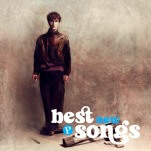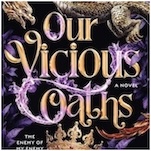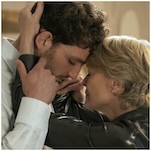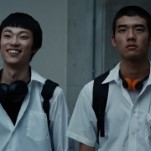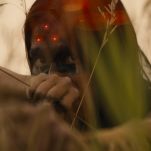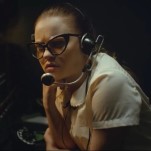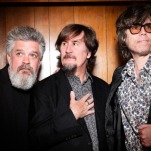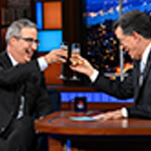The Floor Isn’t a Game Show, It’s Concussion Test Protocol
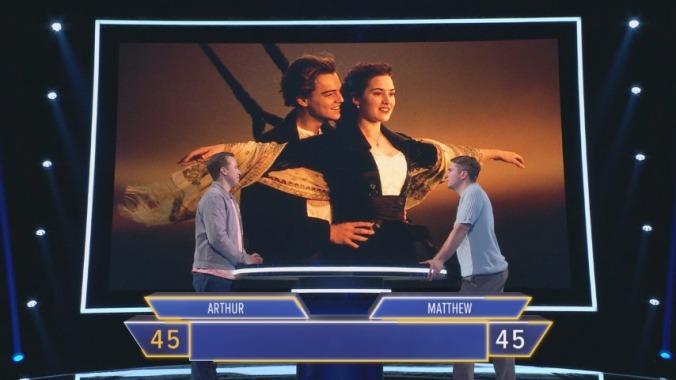
When you imagine the vague outline of an American TV game show, you’re probably picturing questions and answers. Trivia, of the sort that typifies Jeopardy! or Who Wants to Be a Millionaire? That has more or less been the standard format of the average game show for more than half a century. But guess what? Trivia requires questions, and questions require a bunch of writers necessary to craft questions. And why bother with all that fuss and expense when you can just throw up seemingly randomly generated photos on screen and have your “contestants” simply name the thing they’re currently looking at? Welcome to the central premise of FOX’s The Floor, now in its second season. Hosted by Rob Lowe, The Floor is transfixingly banal, a concept so aggressively stupid that it circles all the way around to become oddly mesmerizing. It will challenge every preconception you’ve ever had of what constitutes a legitimate game show, while also providing a frequently hilarious portrait of what it looks like when a contestant’s brain short-circuits in real time. It’s the dumbest thing on TV, but I almost love it.
Creation of The Floor is credited to Dutch billionaire and media tycoon John de Mol, a man who clearly has an innate understanding of man’s stupidest impulses. His production companies have been behind the likes of Big Brother, The Voice, Fear Factor and Deal or No Deal, with the latter feeling like it really taps the most into the elemental randomness and greed-baiting around which The Floor revolves. The concept originated in the Netherlands and has immediately spread like a global pandemic–after the first version launched in 2023, there have been 19 more localizations of The Floor either launched or in development in different countries, of which this U.S. version is only one. From Argentina to Australia, Belgium to Uruguay, people are somehow playing The Floor–evidence, perhaps, that the cognitive decline of society is by no means limited only to the United States. All over the world, “game show” contestants are looking at a picture of a dog, and feeling proud of themselves for replying … “dog,” like an athlete sitting in a heap on the sidelines doing concussion protocol after being struck in the head. It’s like they took Donald Trump’s cognitive test and made an entire season of TV out of it.
Here’s how The Floor works. A grid of small cells on a giant electronic screen forms the game board, with a single contestant in each square. Two contestants compete against each other to name the object on screen in various, random categories as varied as “baseball logos,” “iconic buildings” or “mammals,” with the winner of each “duel” gaining all the territory on the game board previously possessed by the loser. At the end of each day of play, the person with the most territory wins a $20,000 prize, while the person who eventually is left as the last one standing on the entire board (by winning the final duel) takes away $250,000 at the end of the season. After each duel, the winner can choose to press their luck and challenge another contestant bordering them on the game board, or return to their territory and wait to be challenged.
And that’s the entirety of what constitutes the rules of The Floor. The heart of the show is the duels themselves, which pit the contestants–some seemingly random, regular people, and others clearly aspiring actors just trying to get any role on TV–against one another in competitions so lightweight that it’s often difficult to believe that they stand to win money for completing them. But the contrasts can be hilariously surreal–on one side of the podium, you’ll have an exceedingly average-looking middle aged Karen who works as an elementary school teacher, and on the other you’ll have a comically lisping gay stereotype in a rainbow glitter sequined shirt who is so effete and so flamboyant that you’re entirely unsure if he’s playing a character or is actually a real person. And meanwhile, this duo is engaged in a pitched battle to see who can name the most barnyard animals on the screen before time runs out.
If your response to seeing this sort of thing in action is something along the lines of “Who wouldn’t be able to identify a cow?”, then that’s presumably the exact sense of incredulity that the astoundingly lazy premise of The Floor is meant to evoke. It’s a game show that has purposely been rendered insultingly easy, so as to be all the more confounding when the flustered contestants screw things up, as they inevitably will.
And my, when those mental meltdowns occur, they can be pretty spectacular to watch, a potent blend of cringe comedy and confidence boost for the viewer at home. I’ve watched contestants on The Floor simply freeze in place for 20 seconds while staring at the screen, which is an eon–a veritable eternity–in TV time as the 100 other contestants gawk at them and simultaneously ask each other what the hell is going on as the timer slowly ticks away. I’ve seen other contestants fail to answer a question because they simply don’t realize it’s their turn, and no one from the show bothers to inform them of this. The sheer pressure of being made into a spectacle, put up onto the pedestal in front of the other contestants and the viewers back home, has a soporific effect on the brains of the competitors. Some of them panic so badly–especially after a missed answer–that you could probably quiz them about their name and address, and they wouldn’t be able to answer those questions either. The synapse-blasting effect of being put on the spot reminds me of nothing so much as FOX’s own Next Level Chef, a series in which chefs are given only a few seconds to grab cooking ingredients off a moving platform, which similarly reduces otherwise rational people into unthinking beasts of spontaneity who make hilariously poor decisions.

Then there are the categories themselves, a fevered hodgepodge of subjects that range from the ridiculously broad (“sports stars”) to hyper niche and specific (“world currencies”), with the former asking you to identify Lebron James or Tiger Woods and the latter for the currency of Paraguay or Venezuela. Some of the categories, like “Nepo Babies,” are so specific and on-the-nose that you wonder what contestant would possibly have chosen to come to the show with that as their speciality–the most likely answer being that the categories are actually chosen for the contestants by producers themselves, as an alleged former contestant of The Floor claimed in a reddit thread. According to this person, contestants simply show up and inform producers of “what they’re good at,” and the producers create the categories (and the image prompts) from there.
This can result in categories that sound like they would be totally standard or innocuous, but in reality take a strange turn toward the nightmarishly surreal. A first season duel with the category of “bands” was a prime example of this, as you would no doubt expect contestants to identify the bands from elements such as logos, photos or lyrics. But no, it wasn’t that at all–instead, the contestants were confronted with painfully artificial A.I.-generated images that were meant to “represent bands,” and asked to identify them. An image of an elderly couple smooching? Clearly, that’s meant to evoke Gene Simmons and KISS. A collection of bugs? That’s “The Beatles.” A Nosferatu-looking creature luxuriating with a glass of wine and a calendar, with all the Saturdays circled? In the universe of The Floor, that means “Vampire Weekend.” Now who in their right mind would come on this show saying “I’m an expert in bands,” and expect this to be the format to somehow test your musical knowledge? All so FOX can get away without having to pay any artists.

I think Ezra Koenig would agree that this is definitely the image that sums up his band.
Given how little anyone involved in The Floor seems to care about the categories or duels themselves–including Rob Lowe, who basically just smirks his way through the entire endeavor, loathing his own involvement but determined to pick up that check–it should come as no surprise that the game is also deeply unfair to its contestants. Something as innocuous as being based in the corner of the board is actually a huge advantage toward ultimately winning the $250,000 prize, as these contestants can often engage in just a small handful of duels before carving themselves out a safe little fiefdom where they’re very unlikely to be challenged again until the end of the game. So too is it a big advantage to simply never be called upon by the “randomizer” until the final episode of a season–it’s very possible to never play a single round or duel in The Floor until 90% of the other contestants have already been eliminated. They really are entirely at the whim of chance, on multiple levels, and rarely does the person who seems best at the game actually prevail. The format actively resists merit-based success.
The Floor is, for all intents and purposes, the lowest bar I’ve ever seen a show have to clear in order to constitute a major network TV game show. Its contestants, categories, and contests are all inexplicable, but it has the power to create such blindingly absurd moments that the entertainment factor shines through all the same. It is a garish monstrosity of a game show, but I still can’t wait to see which of the contestants falls ass-backward into a victory in its second season.
Jim Vorel is Paste’s Movies editor and resident genre geek. You can follow him on Twitter for more film writing.















